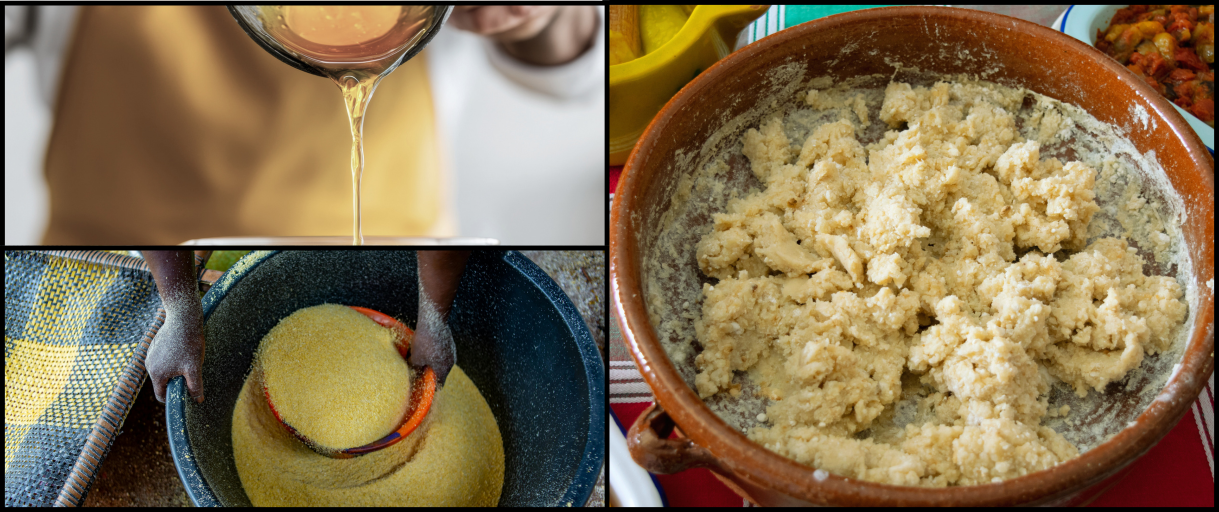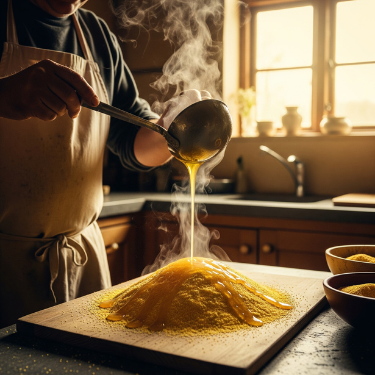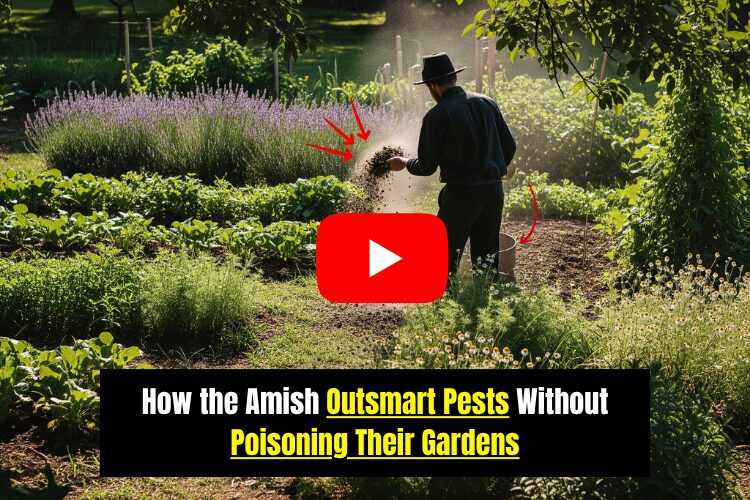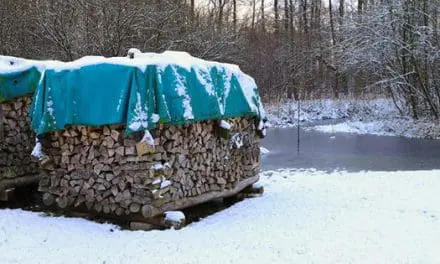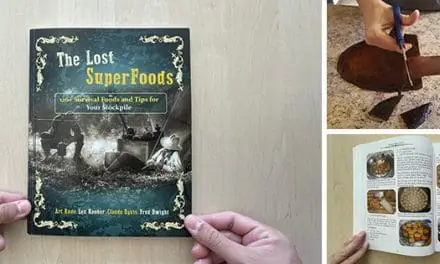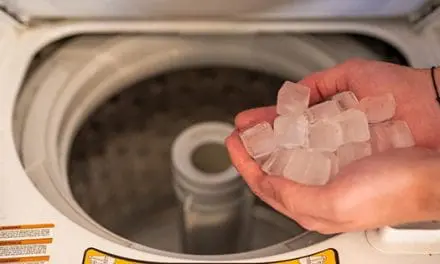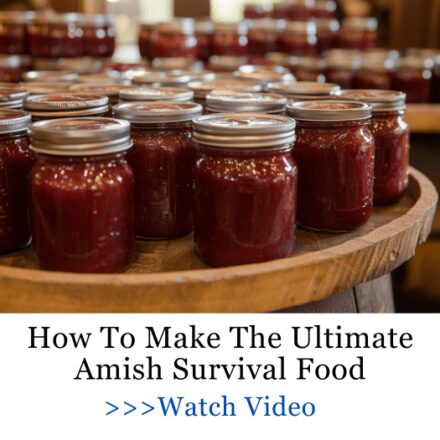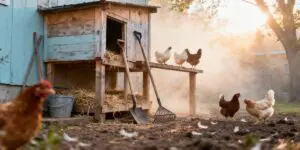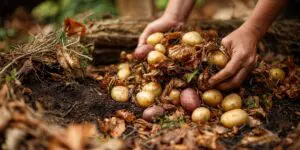If you’ve never poured hot tallow over cornmeal, you’re missing out on one of the oldest, most underrated tricks in the homesteader’s playbook. Pioneers used it as hearty, sustaining meals that could keep them going through hard winters, long trail days, and lean times.
Back in the days when they crossed the plains with nothing but what they could carry in a wagon, ingredients like cornmeal and rendered animal fat were more than just pantry staples. They were lifelines. Tallow kept without refrigeration, cornmeal lasted for months, and together they made a dense, filling meal that could keep a body warm and working through brutal winters or long days in the field.
Today, this old method is worth reviving. It’s simple, it’s smart, and it’s a piece of forgotten frontier wisdom that still works just as well now as it did 150 years ago.
Identifying Tallow
Before we get into why tallow and cornmeal make such a smart, time-tested pairing, let’s clear up what tallow actually is, and what it isn’t. Tallow isn’t just any old animal fat. True tallow comes specifically from beef or mutton, and when rendered properly, it has a clean, mild flavor and stays solid at room temperature. It’s remarkably shelf-stable too, which made it a pantry staple long before refrigeration was common.
You don’t just scoop tallow off a cow, either. It has to be rendered, meaning the raw fat (often the dense, waxy kind around the kidneys) is slowly melted down over low heat. Once liquified, it’s strained to remove the cracklings, then left to cool into a firm, ivory-colored block. That’s the good stuff.
In Amish communities, rendering fat is second nature. It’s not just about thrift, though they certainly don’t waste a thing. It’s about function. A crock of tallow on the kitchen counter is as common as a cast iron skillet. They’ll use it for everything from greasing pans and frying doughnuts to making baked goods that stay fresh longer. The recipes they use haven’t changed much in a hundred years, and for good reason. When something works this well, you stick with it. And you can learn how you can make it too, the true Amish way, right here.
How to Make Lard and Tallow Just Like the Amish
Cornmeal: Every Homestead’s Staple
If you are an avid farmsteader, chances are that you already have cornmeal in your pantry. And if you don’t, it’s not difficult to make it on your own. You just have to harvest corn, dry it and then grind it using a hand mill, and that’s it. In just a few quick steps, you have prepared a delicious yet nutritious base for many hearty recipes.
The best thing about cornmeal is that it can be used to prepare almost anything: soups, cornbreads, or even to feed livestock. The even better part about it is that it has an incredibly long shelf life. You can prepare it and store it in your pantry for many seasons to come.
➡️The Under $1 Walmart Canned Goods You Absolutely Need to Add to Your Food Reserves
Why You Should Pour Tallow Over Cornmeal Right Now
It might not look fancy, but this old-time combo has earned its keep for generations. Pouring hot tallow over cornmeal isn’t just a quirky trick from the past. It’s a smart, time-tested way to turn two basic ingredients into one of the most practical staples you can keep on hand. Here’s why this humble pairing deserves a permanent spot in your homestead routine:
A Homesteader’s Secret Weapon
When tallow meets cornmeal, the result is more than just filling. It’s functional. Tallow brings in slow-burning fat and vital nutrients, while cornmeal adds fiber and lasting energy. The result? A calorie-dense staple that powers you through hard labor, cold mornings, and lean seasons. This combo helped our ancestors thrive, and it still holds up today.
Built for the Whole Homestead
This isn’t just food for people. Your animals can benefit too. Pouring this warm mix over winter feed gives chickens, pigs, and goats a much-needed energy boost. It helps maintain body heat, supports healthy weight gain, and keeps your livestock thriving—especially when feed is stretched thin. One batch can support both you and your animals, all with minimal effort.
Pantry-Ready and Practically Immortal
Tallow and cornmeal have long shelf lives and require no refrigeration. Stored in a cool, dry place, this mix holds up for months—making it ideal for off-grid living, emergency prepping, or simply stretching your budget. Portion it out, keep it sealed, and you’ve got a ready-to-eat staple on hand year-round.
➡️ How to Stockpile 272 pounds of long-lasting food with just $5
4 Ways to Use Cornmeal and Tallow on the Homestead
Looking at a jar of tallow and a sack of cornmeal, you might not realize just how versatile they are. But these two ingredients can pull more than their weight around the homestead. Here are four ways I’ve put them to good use—each one simple, reliable, and worth keeping in your back pocket.
Cornbread That’s Actually Worth Eating
Ditch the bland box mixes. Using tallow instead of butter or oil transforms your cornbread into something rich, hearty, and full of flavor. You’ll get a golden crust, moist center, and that old-fashioned taste that sticks to your ribs. Once you’ve tried it this way, the store-bought stuff just won’t cut it.
Quick Survival Bars with Real Staying Power
Need food that lasts and fuels you fast? Mix cornmeal and melted tallow into thick bars or patties. These simple rations are perfect for tucking away in your emergency stores or taking on long hikes. They’re shelf-stable, calorie-rich, and designed to keep you going when supplies are low.
A Feed Boost for Livestock and Chicks
Stirring warm tallow into cornmeal creates a protein- and fat-rich mix that animals love. It’s especially helpful for young chicks or recovering animals that need extra calories to grow strong. In colder months, it also helps your flock and herd stay warm and healthy with minimal fuss.
A Natural Pest Control Trick
Pests can sneak into even the tidiest homestead. Ants in the pantry, bugs around the coop, and unwelcome critters near feed bins. Most folks reach for sprays or traps, but those come with a cost: chemicals, fumes, and the risk of harming animals or children.
Believe it or not, this mix can help control pests, too. A small amount of cornmeal left near ant trails or bug-prone areas can attract them, while the fat binds it and keeps it in place. It’s a simple, chemical-free way to reduce unwanted visitors around your home or coop.
But that’s just one trick from the old days. The Amish have dozens more clever methods for keeping pests away using only what nature provides. If you want to see how they do it, without a single drop of store-bought spray, you’ll be surprised by how effective and downright simple their solutions really are.
Making the Mix
You can’t just pour any amount of tallow over cornmeal and expect the perfect results. Getting the right balance is key to unlocking all the benefits of this powerful combination. Below are some simple steps and ratios to create a mix that’s easy to use, store, and enjoy on your homestead.
- Ratio to Maintain: For the best results, aim for about one part tallow to four parts cornmeal. This ratio keeps the mix firm but still soft, so it is easier to handle and store the mix without making a mess.
- How to Mix: Begin by slowly pouring tallow over the cornmeal while stirring the mixture. Consider mixing the ingredients until a homogenous mixture is obtained and the texture is moist and crumbly.
- Storage Tips: Storing cornmeal and tallow mix is super easy. It doesn’t require any complex techniques. Just store it in an airtight container and keep it in a cool and dry place. Moreover, if you’re living in a warm climate zone, you can consider refrigerating it.
While you’re thinking about hearty meals like tallow and cornmeal, don’t forget the power of what you grow.
Make sure you stock up on both food and medicinal seeds. This way, when everyone pays for antibiotics in gold, you’ll have them growing in your backyard. This crisis-proof seed pack contains one plant for every part of your body – you’ll find a painkiller, an anti-inflammatory, an anti-parasitic, and even some plants that can help people with diabetes and autoimmune disorders.
Final Words
The benefits of combining tallow and cornmeal on the homestead are truly countless. So, the next time you find yourself with extra on hand, don’t waste time wondering what to do and put them to good use! Whether it’s for cooking, storing, feeding, or protecting, this mix has your back. Just be sure to get the ratio right, and you’ll start seeing the difference in no time.
10 Canning Recipes From The Amish
Why You Should Can Dandelions Growing in Your Backyard (Video)
How To Make Long-Lasting Tallow For Survival
Long-Lasting Foods That Got Soldiers Through the Civil War
I Tried Eating Like a Pioneer for 100 Days and This Is What Happened

